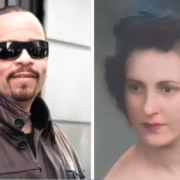Life would be empty without colors. It would be a painting with just the outlines. Maybe that’s why the term a riot of colors came into being. Various colors come together to create an incredible spectacle. But what about black and white?
Photography revolving around these two colors first appeared in the 1990s. The reasons then were different. Color photography was expensive and involved plenty of processing. Ever since its debut, black and white photos have caught on. The number of people looking for effective Black & White Photography Tips increases every day.
Why? There are several reasons behind that. Lending a timeless appeal to a photo. A focus on fewer elements. Lesser distraction. This article covers all of those. It tells you the reasons why you should consider experimenting with this type of photography and what makes it so popular.
It has a timeless appeal
Just observe any photo in black and white. It has a timeless appeal to it. As if it had existed for centuries. And if the subject is a monument or a landscape, that feeling is certainly exaggerated. Observe it for a long time, and you find yourself completely immersed in its details.
And that’s another thing. It is perhaps the lesser but effective details behind the timeless look. Lesser colors mean fewer distractions. There’s a reason why even expert photographers rely on these two colors. You could choose something as simple as a fruit and give it this look.
Far lesser distractions
A colorful photograph lends itself to celebration, life, and richness. But there’s a drawback. Too many colors distract the viewer from the focus of an image. The focus here refers to the main subject of a photograph. But why does that happen? Blame it on human nature.
Humans are naturally attracted to colors. Even more, so if they’re bright. Naturally, too many in one will catch their attention first. The central theme fades into the background. Black and white does not apply here. The viewer’s focus is always where the designer intended it to be. It is the shades, textures, and lines that vie for attention.
More emphasis on lighting
Lighting and composition find sufficient breathing space in the absence of colours. The photographer has to rely on the effect of lights on their subjects to create action. They set the mood and feel of the picture using two tools: shadows and contrasts.
Here’s a more basic explanation should that sound very technical. Photographers have a sharp eye for detail. Using that, they observe where light falls on a picture and the shadows. Once they’ve done that, they use the contrast between the light and shadow to create a particular atmosphere for the picture. This helps them set a somber, joyous, nostalgic, celebratory, or any other mood that they wish to.
Greater role of lines and textures
Lines and textures get extra attention when colors aren’t present. Details, which are usually overlooked, occupy their own space. The outlines of surfaces, trees, humans, or whatever the subjects involved in the picture, stand out on their own.
This brings a stillness to the image. The viewer has plenty of time to admire the outlines of the components. It lends a unique visual appeal. Again, this is made possible by the use of light and shadows. Through that, the viewer notices the repetitive patterns in a picture. For example, suppose the picture is of several trees in the forest. The viewer will focus on how they occupy the space at regular intervals.
Can be used in various settings
Surprisingly (or not), black and white photography can be used for almost any setting. It’s this versatility that endears it to photographers, both amateurs and experienced. Think of a drizzly day. Or an area under a bridge. A gigantic monument overlooking a public square. A couple on a boating trip.
Black and white works well for all these settings. Photographers are not limited by the color options. You might find this ironic. More colors mean more options, right? Not really. Using just two colors allows the photographer to create various moods. They can add an emotional depth to their picture.
How do you choose the right software?
Of course, to be able to do all of the above, you need to choose an appropriate tool. Just any won’t do. You should pay particular attention to some elements.
The first of these is the user interface. You should be able to use the tool effortlessly. It should also offer plenty of options for experimenting with shadows, highlights, and exposure. Also, check if the tool has editing features like advanced masking and customizable preset. Another thing that should draw your attention is the options for image export. It should let you export the file in various formats like JPEG, TIFF, and PNG.
Taking the help of Black & White Photography Tips will help you a lot if you’re a beginner. You can experiment with the action, mood, and setting once you become familiar with this style. But remember, there’s a lot to be done in photography using just two colors. All you have to do is start.
View the most recent updates at Globally viz














Comments